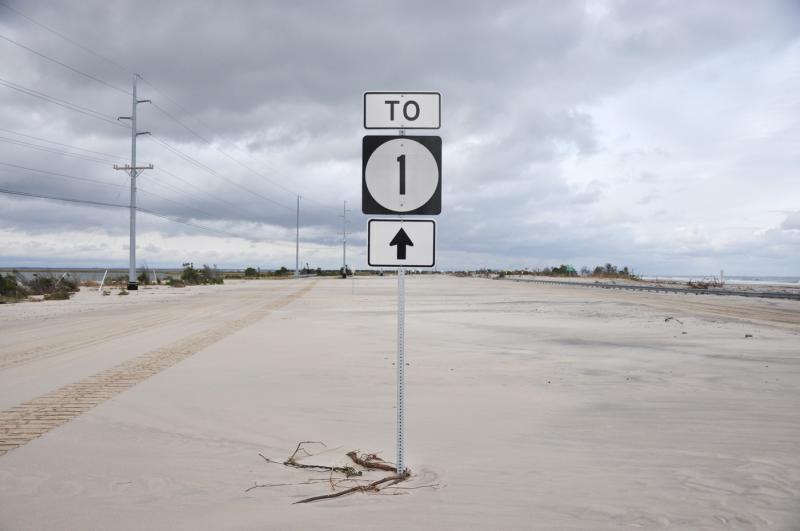DelDOT analyzing Dewey-to-Fenwick corridor

If flooding forces transportation officials to close Route 1 between Bethany Beach and Dewey Beach, motorists must take an 18-mile detour through Millsboro and Dagsboro.
The Delaware Department of Transportation recognizes this isn’t an ideal scenario, so it’s working with consultants on the SR 1 Coastal Corridor Resiliency Study to develop and prioritize future improvements and projects for the six-mile stretch between Dewey Beach and the Maryland state line.
“This is a high-level planning study that we're beginning right now,” said Joe Hofstee of DelDOT consultant AECOM. “It is not a design project, but what we're looking to do from this study is begin to break out future projects, which will be identified as part of this project, and prioritize for moving forward.”
Hofstee said the study is funded by a Federal Emergency Management Agency grant. Officials from DelDOT and AECOM offered the study’s first public presentation Sept. 20. Based in part from public input, AECOM will develop a draft technical report later this fall, with a second public workshop expected in winter 2023. By the end of 2023, project officials anticipate DelDOT will submit grant applications for future projects identified in the study.
DelDOT Secretary Nicole Majeski said one of the study’s goals is to examine the impact climate change and sea-level rise have on transportation and infrastructure, and incorporate resilient, sustainable mitigation measures into planning, design, construction and maintenance.
“[With Delaware] as the lowest-lying state, creating resilient infrastructure in the face of roadway flooding is a challenge,” she said. “We have been, and continue to be, challenged by frequently flooded roadways – even on sunny days. The SR 1 corridor between Dewey Beach and the Maryland state line is particularly vulnerable, with effects coming from both the ocean and the bay.”
Coastal models will be used to establish existing and probable future conditions. Future conditions are important because DelDOT and AECOM want to look at potential sea-level rise and increased frequency of storm events, Hofstee said. Also important to the study is a sediment transport model that looks at the movement of sand and potential dune erosion.
“We want to make sure [dunes] can withstand a storm event and if they’ll be there to hold back the water, and to also look at future mitigation alternatives to see if they can withstand it,” Hofstee said.
Kira Murphy, a marine structural engineer with AECOM, said the design team is evaluating several primary and secondary flood mitigation measures, which include a variety of approaches such as raising roadways, building flood walls and other barriers, and creating living shorelines.
Murphy said each mitigation measure will be evaluated based on specific criteria including level of protection provided, construction and maintenance costs, physical constraints, environmental effects and others.
“SR 1 is vital to the economic well-being of the area and the state as a whole,” Hofstee said. “We want to make sure that we can keep those resort areas open – the restaurants, the businesses – and allow people to get to their homes and bring income to to the state.”
For more information or to provide comments, go to deldot.gov/projects/Studies/sr1-coastal-corridor.
BOX
Primary flood mitigation measures
- Exposed flood wall - A vertical barrier built to retain floodwaters
- Buried flood wall or structural dune - Typically made from concrete or steel sheet pile and covered with soil or sand to form a berm or dune
- Short-term deployables - Temporary solutions for flood protection such as water-filled bladder barriers, L-shaped barriers, sandbags or geotextile bags
- Permanent deployables - Long-term solutions for flood protection such as slip-up gates, swing gates or sliding gates
- Raised or rerouted roadways
Secondary flood mitigation measures
- Living shorelines - Bioengineered, natural infrastructure solution that assists with shore stabilization and protects against erosion
- Revetments - Sloping structures made out of stone to provide slope stabilization, erosion protection and energy absorption





















































